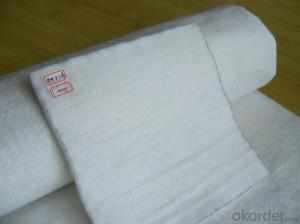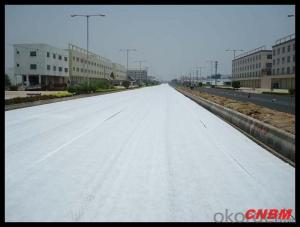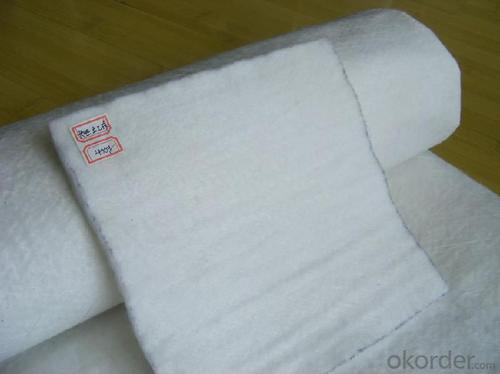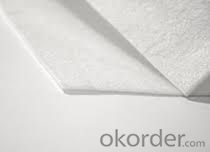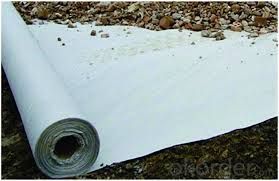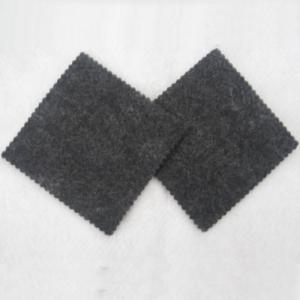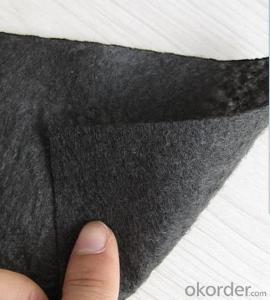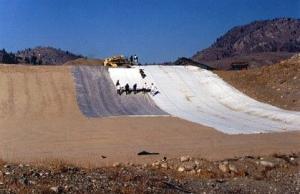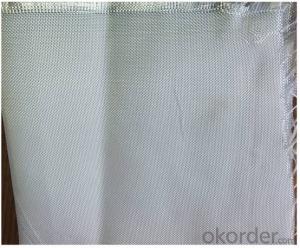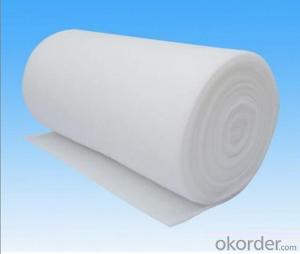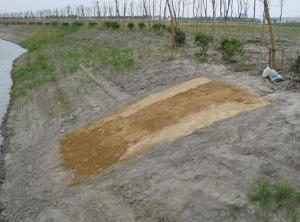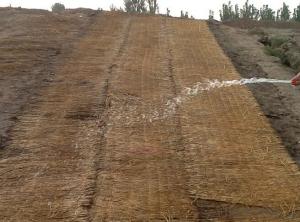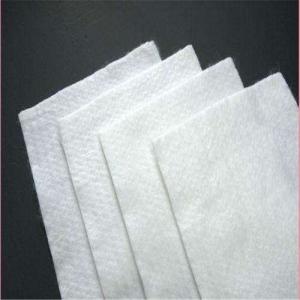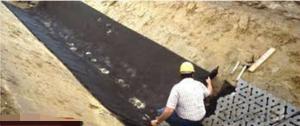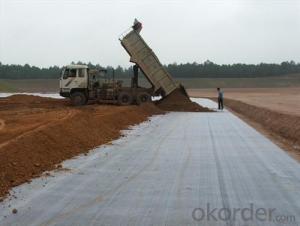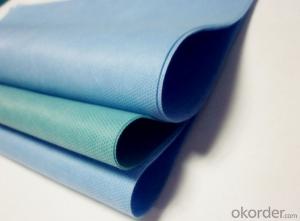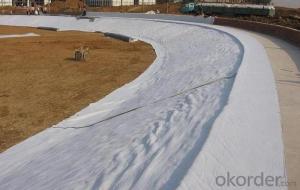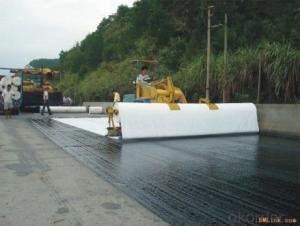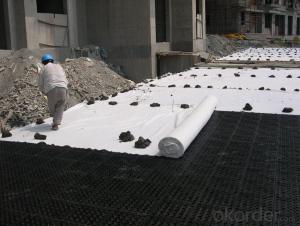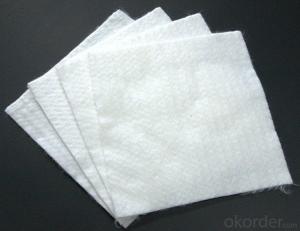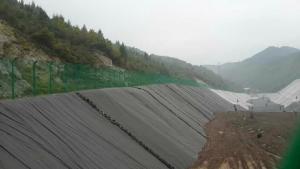Dalco Geotextile Polypropylene Hydrophilic Geotextile Fabric, 100% PP Spunbond Nonwoven Fabric
- Loading Port:
- China main port
- Payment Terms:
- TT OR LC
- Min Order Qty:
- 1000 m²
- Supply Capability:
- 1000000 m²/month
OKorder Service Pledge
OKorder Financial Service
You Might Also Like
Specification
Applications:
1) Filtration :
The filtration layer of the dykes, river canal, seacoast, concrete slope, retaining walls. At the same time of preventing the clay granule from passing, it allows the water and the gas pass through freely.
2) Separation :
The isolation of the railway dregs and the roadbed, roadbed and the soft base, surface of the airdrome and parking lot and the groundsill, different dam materials. It isolates the soil and the gravel of two kinds different granule pathway from the groundsill or other buildings.
3) Adding muscle :
The highway, railway, soil-stone dam, breakwater, airport, backfill soil of retaining wall, slope protection, etc in which distributes the earth stress, prevents the side-displacement of the earth body and improves the earth body stability.
4) Protection :
It prevents the bank from being washed out, protects the bank and the bottom, prevents the water and soil from being washed away.
Packing and shipping:
♦ Packing:in plastic film bag(keep away from moisture) and PP bag or as your customize.
♦ Shipping:By sea or as your customize
·gift and packaging bags
·disposable diapers, sanitary napkins & tampons
·sterilewraps, caps, gowns, masks and drapings used in medical field
·apparel interlining
·agricultural coverings and seed strips
·civil engineering fabrics/geotextiles
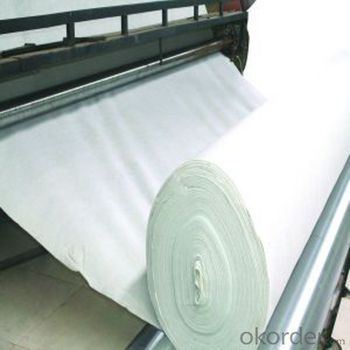

Our Service
Quality assurance
1.On a regular basis or as per your request,we entrust national testing agencies to conduct quality inspections
2. Strictly in accordance with the ISO9001-2008 international quality system standard,we monitor and manage the whole process throughout production,quality testing,and measurement to ensure product quality
3. For quality-related construction delay or substandard construction(except for damage or losses due to customer’s responsibility or irresistible natural disasters),we have refunding,replacement,and repair services.We will respond to customers’ feedbacks on quality issues within 24 hours.
Q: What kind of payments does jenor support?
A: T/T, L/C, Cash are accepted.
Q: Do you charge for the samples?
A: Accordeing to our company policy, the samples are free, we only charge the freight fee. And we will return the freight fee during the next order.
Q: Can you produce according to customers' design?
A: Sure, we are professional manufacturer, OEM and ODM are both welcome.
Q: Do you have other products?
A: Yes, please check the pictures:
Packaging & Shipping
Packing: PLASTIC FILM INSIDE, AND WOVEN BAG OUTSIDE
Shipping: About 15 days after receipt the deposit
pecifications
geotextile fabric
permeability,filtration,easy for construction
ISO and CE certificate
Good quality and competitive price
- Q: Application of composite geotextile
- Water conservancy projects: seawall, river embankment, lake embankment project; reservoir reinforcement project; reclamation project; flood control and rescue. Highway and railway engineering: soft foundation reinforcement treatment; slope protection; road anti-reflective crack structure layer; drainage system; green isolation zone. Electrical engineering: nuclear power plant basic engineering; thermal ash dam project; hydropower project.
- Q: Filament, preferably concrete construction
- Tianhai new material filament geotextile case analysis of water conservancy projects: seawall, river embankment, lake embankment project; reservoir reinforcement project; reclamation project; flood control and rescue. Highway and railway engineering: soft foundation reinforcement treatment; slope protection; road anti-reflective crack structure layer; drainage system; green isolation zone. Electrical engineering: nuclear power plant basic engineering; thermal ash dam project; hydropower project.
- Q: Are geotextiles resistant to chemical leaching?
- Yes, geotextiles are generally resistant to chemical leaching. They are designed to withstand exposure to various chemicals and prevent their migration through the fabric, making them an effective barrier against chemical leaching.
- Q: Do you need to suture the lower geotextile of composite geomembrane?
- Generally do not need to suture, the need for geomembrane welding. The above geotextiles need to be stitched
- Q: How do geotextiles help with reinforcement of geotextile bags?
- Geotextiles help with the reinforcement of geotextile bags by providing strength and stability to the bags. They act as a barrier and prevent the soil or other fill material from escaping through the pores of the bags. Additionally, the geotextiles distribute the weight of the fill material evenly, reducing the risk of bulging or bursting of the bags.
- Q: What are the types of geotextiles used in railway subgrade
- Railway is more demanding than the highway, the railway subgrade is to bear and pass the orbital gravity and the dynamic structure of the train structure, is the basis of the track is to ensure that the train running an important building, the roadbed is a rock and soil structure, in a variety of topography, Geological and climatic conditions, such as floods, debris flow, earthquakes and so on. Therefore, geotextile in which the main play of his reinforcement and isolation, reinforcing the main material to enhance the shear and tensile deformation of the ability to prevent reflection of cracks in the road; isolation is the separation of different materials to maintain their own performance. As the geotextile itself is not waterproof, in the old road renovation over the asphalt mixture will form impermeable complex, in addition to preventing cracks and a certain degree of water defense, the railway subgrade is usually used in the two cloth a film complex Published, so with 600 grams of filament geomembrane more
- Q: What are the different methods of installing geotextiles?
- There are several methods of installing geotextiles, including trench installation, direct placement, and mechanical installation. Trench installation involves excavating a trench and placing the geotextile in the trench before backfilling. Direct placement involves laying the geotextile directly on the ground surface and securing it with stakes or other means. Mechanical installation utilizes specialized equipment, such as a geotextile installation machine, to roll out and secure the geotextile in place.
- Q: How do geotextiles contribute to the performance of geosynthetic tubes?
- Geotextiles play a crucial role in enhancing the performance of geosynthetic tubes by providing reinforcement, filtration, and separation functions. They help to distribute and dissipate stress and loads, preventing the tube from deformation or failure. Geotextiles also act as a filter, allowing water to pass through while preventing soil particles from clogging the tube, maintaining its hydraulic efficiency. Additionally, they separate different materials within the tube, preventing mixing and maintaining the integrity of the structure. Overall, geotextiles significantly contribute to the durability, stability, and effectiveness of geosynthetic tubes in various applications.
- Q: What are the key considerations for geotextile installation in seismic retrofitting projects?
- The key considerations for geotextile installation in seismic retrofitting projects include selecting the appropriate type and grade of geotextile based on site conditions, ensuring proper placement and anchoring of the geotextile to provide effective soil stabilization, assessing the potential for liquefaction and designing appropriate measures to mitigate it, considering dynamic forces and ground motion during installation, and conducting regular inspections and monitoring to ensure the geotextile's performance and effectiveness in withstanding seismic events.
- Q: How do geotextiles improve the performance of embankments?
- Geotextiles improve the performance of embankments by providing reinforcement and stabilization. They distribute loads more evenly, preventing the embankment from settling or shifting. Additionally, geotextiles control erosion by allowing water to flow through while retaining soil particles, reducing the risk of slope failure.
Send your message to us
Dalco Geotextile Polypropylene Hydrophilic Geotextile Fabric, 100% PP Spunbond Nonwoven Fabric
- Loading Port:
- China main port
- Payment Terms:
- TT OR LC
- Min Order Qty:
- 1000 m²
- Supply Capability:
- 1000000 m²/month
OKorder Service Pledge
OKorder Financial Service
Similar products
Hot products
Hot Searches
Related keywords
